Conversion of gas central heating to electric
01 June 2020
For the last couple of years, we have had a plan to incrementally remove the carbon emitting sources from our daily life. This started with PV solar power, improved insulation for our house, and more recently with the replacement of our diesel SUV with an electric car.
The last significant carbon emitters have been our gas-powered central heating, and the Renai gas-powered instant hot water. Both of these solutions were due for some maintenance - the boiler for the central heating was again starting to leak. This was probably due to another failing bladder. The Renai instant hot water system was of unknown age, and was rather rusty and probably well overdue for replacement.
Mitsubushi Electric Ecodan
Our desire had been to replace the burners with an electric based solution - this would make more use of the generation from the solar panels. Ideally, it would be a heat-pump based solution too - so that we get the 300% or 400% efficiency.
The Ecodan solution from Mitsubushi Electric is a heat pump based solution that met all of our requirements. It uses a heat pump to heat the hot water. This is either stored in the included hot water cylinder for showers, baths, etc. Alternatively, the system will pump hot water around the radiator circuit for heating the rooms.

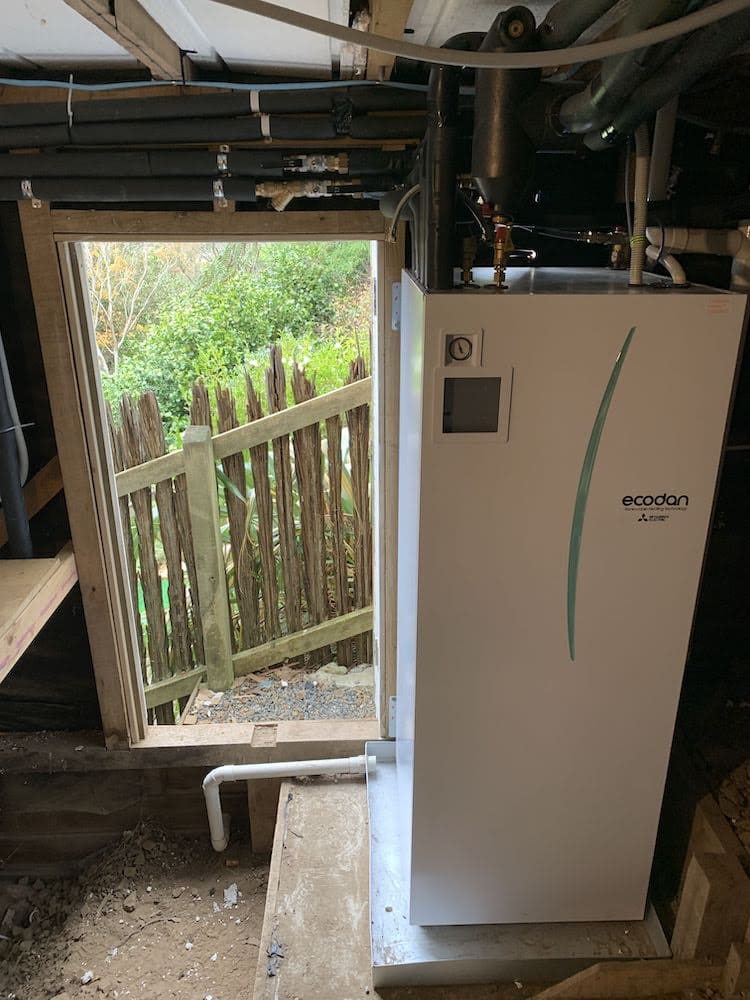
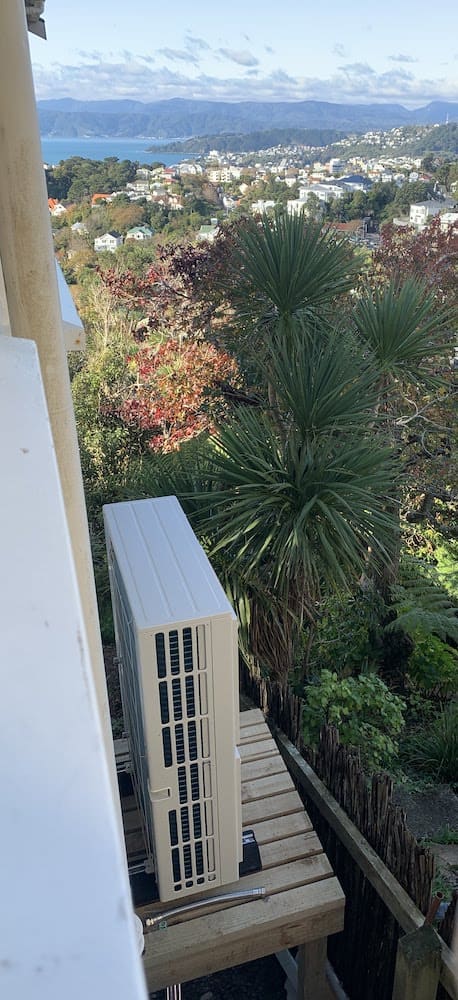
Construction
We needed some construction of:
- a concrete pad for the hot water cylinder,
- a larger basement door (big enough for the cylinder), and
- a wooden stand for the fan unit
This took around 3 days. Here are some photos:
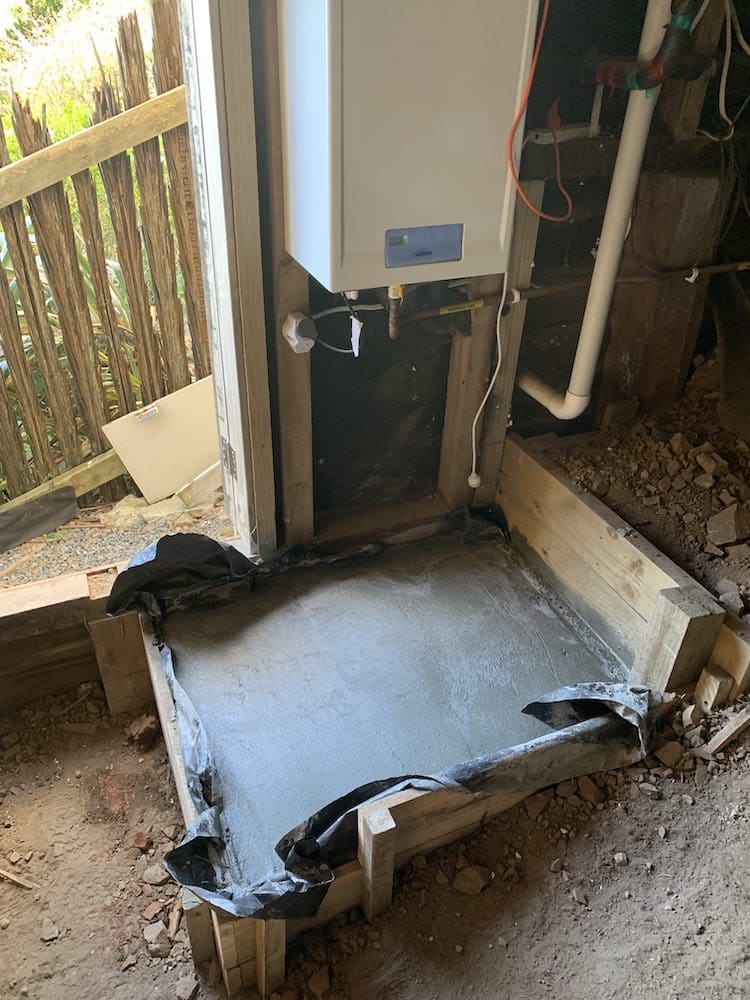
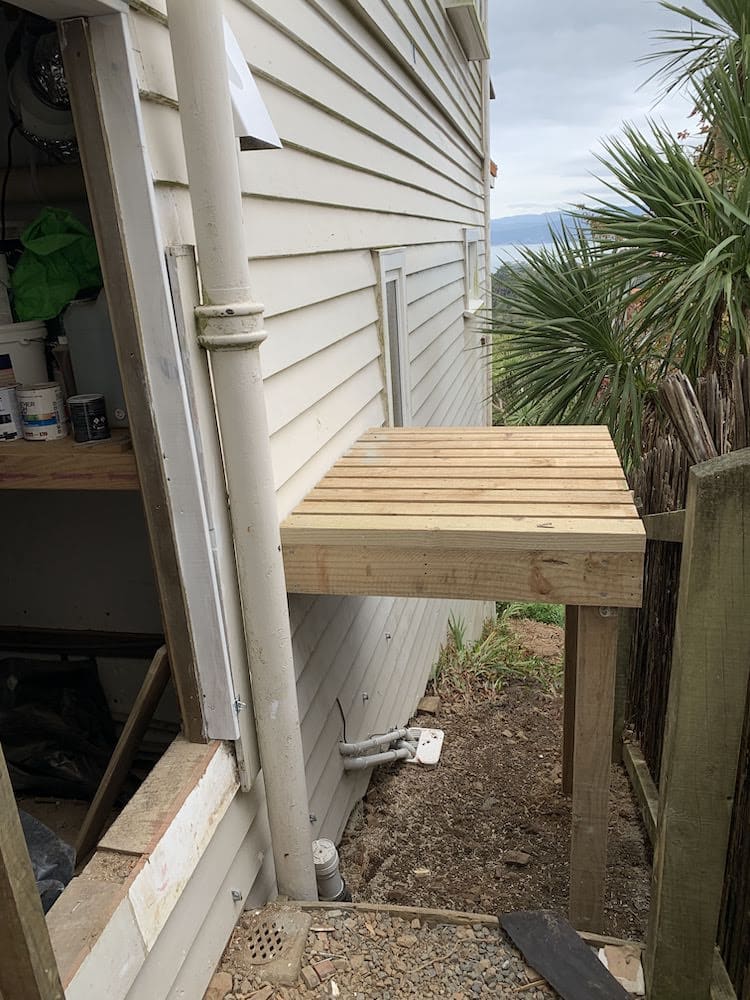
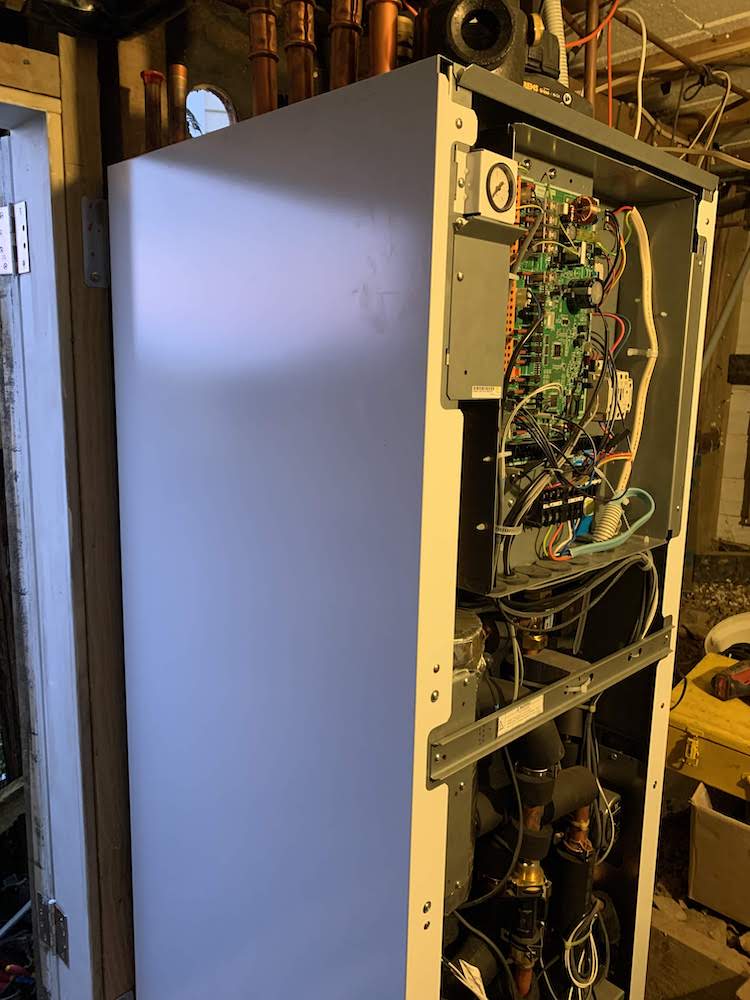
Week 1 of usage
We are still in the first week of usage of the new system. It’s a bit hard to comment on the differences so far, but it is warm. And the system seems fairly quiet.
We have configured the system to heat the domestic hot water during the middle of the day - this should make the most of the solar electricity generation. And a topup overnight - around 4am when electricity prices are low.
The central heating component will run at 18 degrees for the night and most of the day. This will increase to 21 degrees from around 3pm, while the sun is still out. Hopefully the house will warm up when there is still some sun around. We may need to move this forward a little, depending on the season.
After a couple of weeks, we will have a better idea of how effective this configuration is. We hope that our overall energy bill should decrease, and obviously we should have close to zero carbon emissions from the cleaner energy sources (the sun, and the NZ electricity grid).
Related posts
- My Tesla Powerwall Experience
- Review of the Mitsubushi Ecodan
- All about solar panels
- Four years of household energy costs and emissions
- Comparison of fossil-fuel with electric-only energy costs for spring
- Household energy costs comparison for winter
- Price Comparison of Electricity and Gas
- Energy efficiency after 1 week
- Recording our carbon footprint at home
- Please don’t wait for the Politicians